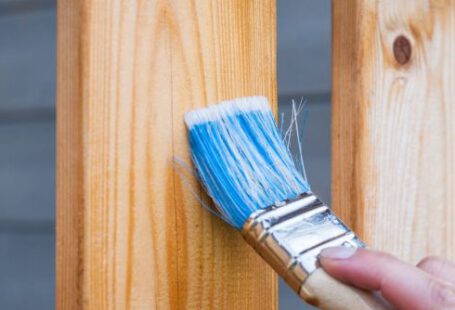Masonry trowels are essential tools for any mason. They are versatile tools that can be used for a wide range of tasks, from basic brick laying to intricate stonework. In this article, we will explore the versatility of masonry trowels and how they can be used to complete a variety of projects.
Types of Trowels
Masonry trowels come in a variety of shapes and sizes, each designed for a specific task. The most common types of trowels are the brick trowel, the pointing trowel, the margin trowel, and the tile trowel.
The brick trowel is the most recognizable type of trowel, typically characterized by its wide, triangular-shaped blade. It is most often used for laying bricks and for shaping and smoothing mortar.
The pointing trowel is a smaller trowel, with a narrower blade that is designed for applying and shaping mortar between bricks. It is also commonly used for patching, repairing, and filling in small cracks and crevices.
The margin trowel is a smaller version of the brick trowel, with a narrow blade. It is ideal for working in tight spaces and for detailed work, such as cutting grooves and laying trim.
The tile trowel is a specialized trowel with a curved blade that is designed for laying ceramic and stone tiles. It is ideal for working in tight spaces and for making precise cuts.
Uses for Masonry Trowels
Masonry trowels are versatile tools that can be used for a variety of tasks. Here are some of the most common uses for masonry trowels:
- Laying Bricks and Stones: Masonry trowels are essential tools for laying bricks and stones. The brick trowel is ideal for laying bricks, while the tile trowel is perfect for laying tiles. The pointing trowel is perfect for applying mortar and shaping it between bricks.
- Repairing and Patching: Trowels are particularly useful for repairing and patching brickwork and stone. The pointing trowel is ideal for filling in small cracks and crevices, while the margin trowel is perfect for trimming and cutting grooves.
- Making Mortar: Masonry trowels are also useful for making mortar. The brick trowel is ideal for mixing and applying mortar, while the margin trowel is perfect for making precise cuts and shaping the mortar.
- Shaping and Smoothing: Masonry trowels are also useful for shaping and smoothing mortar, bricks, and stone. The brick trowel is ideal for smoothing and shaping, while the tile trowel is perfect for trimming and cutting grooves.
Tips for Using Masonry Trowels
Masonry trowels are a versatile and essential tool for any mason. Here are some tips for getting the most out of your masonry trowels:
- Choose the Right Trowel: Make sure to choose the right trowel for the job. The brick trowel is ideal for laying bricks and shaping mortar, while the tile trowel is perfect for laying tiles and making precise cuts.
- Keep It Sharp: Make sure to keep your trowel sharp. A dull trowel will make your job harder and may lead to poor results. To keep your trowel sharp, use a stone or file to sharpen it regularly.
- Practice Makes Perfect: As with any skill, practice makes perfect. Take some time to practice using your trowel before beginning a project to get a feel for how it works and to make sure you are using it correctly.
- Clean It Regularly: Make sure to keep your trowel clean. Mortar and other debris can build up on the blade of the trowel, making it less effective. Regularly clean your trowel with a wire brush or a damp cloth to keep it in top condition.
Conclusion
Masonry trowels are essential tools for any mason. They are versatile tools that can be used for a wide range of tasks, from basic brick laying to intricate stonework. With the right trowel and a bit of practice, you can use masonry trowels to complete a variety of projects with ease.






